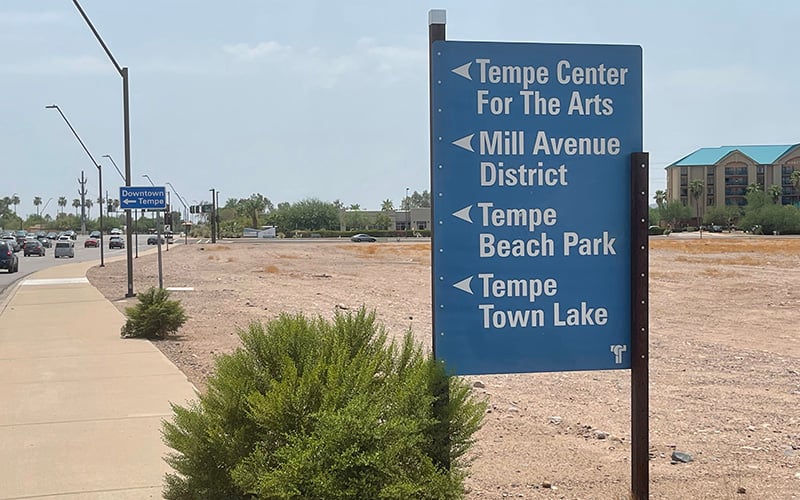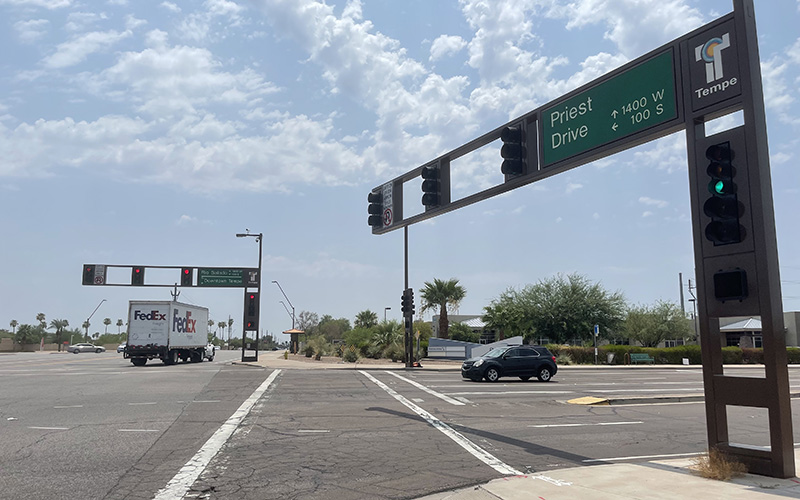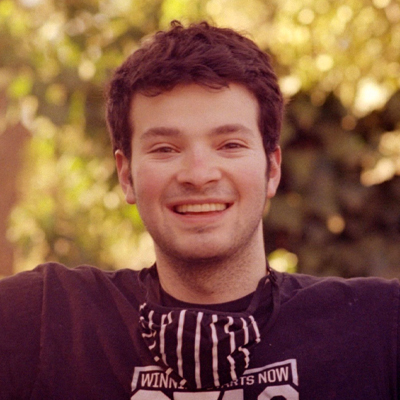
The Arizona Coyotes’ plan for a new stadium in Tempe could be affected by a $70 million expense for environmental remediation on the site of an old sand and gravel mine, which includes landfill materials buried deep below the surface. (Photo by Emily Carman/Cronkite News)
PHOENIX – It’s a short declarative phrase in Tempe’s request for proposal, which was published July 22: “Finally, it will be respondent’s financial responsibility to remediate the land.”
But along with a cost estimate of $70 million presented in June, it represents a considerable fiscal and logistical burden for the Arizona Coyotes if the team hopes to develop a new stadium in the East Valley.
The process of environmental remediation – removing contaminants from water and soil – for the 46-acre site northeast of Priest Drive and Rio Salado Parkway on the Salt River will be multifaceted. Judith Grant Long, a professor of sport management and urban planning at the University of Michigan, said she has seen reports of land costs become much more detailed during her time studying sports venues. But she added that the public might not have a desire to know the intricacies of these estimates.
“People want to know it’s $70 million,” Long said, “but they don’t really want to know how much of that is soil-based, how much of it’s water-based, how much of it’s trash-based, et cetera.”
The Coyotes, who play in Glendale, acknowledged in a statement July 22 that it is looking at options for a new home, “given our determination to remain in the Valley for many years to come.”
A geotechnical report prepared by Global Environmental Consulting in 2009, included with Tempe’s request for proposal, indicated that the area adjacent to the site (north of Hardy Drive) previously served as a sand and gravel mine. It also had landfill materials buried 16 to 37 feet below the surface.
“That’s where your trouble’s going to be,” said Chris Spengler, who helped lead remediation for Petco Park in San Diego. “The sand and gravel mining shouldn’t be too big of a problem unless they have underground storage tanks for fueling equipment and vehicles.”
The underground situation is also not uniform throughout the land. For example, the report mentions variance in landfill materials between construction and household debris.

One of the locations the Coyotes are looking at for a possible move is the intersection Priest Drive and Rio Salado Parkway in Tempe. (Photo by Emily Carman/Cronkite News)
“You can’t make a broad statement about the entire site,” said Bruce A. Keyes, of counsel at Foley & Lardner LLP in Milwaukee. “You really have to look at it piece by piece.”
Keyes, who described himself as “completely fascinated by the development of sports facilities on landfills,” has represented several such projects in Wisconsin, including a baseball and entertainment complex (Ballpark Commons), a college sports facility and multiple soccer fields.
Building on fill materials, as in Tempe, presents a veritable minefield of obstacles. Keyes said these include contamination, instability caused by decaying landfill mass, ongoing maintenance and potential methane gas emissions, which can become explosive if not remedied.
Building a sealed facility like a hockey arena on top of a fill site could be particularly challenging on the methane front, he added.
“Open-air and limited closed structures are really good for landfills,” he said. “The Coyotes are talking about something that’s an enclosed structure. That makes it more complicated, not insurmountable.”
Keyes explained that a hockey arena still doesn’t have a lot of small, confined spaces, which is good for avoiding potential accumulation and contamination.
Given all these potential issues, the remediation process could be even more expensive than the $70 million forecast. Tim Kellison, a professor at Georgia State University who concentrates on sport in the urban environment, said going over budget is “inevitable” for this kind of project. He cited examples including Tropicana Field, which nearly tripled in land costs compared to its original estimate, according to a 1990 article in the Tampa Bay Times.
“What tends to occur is an underestimation of just how badly the land is contaminated,” Kellison said. “and as a result, how much it will cost to actually do a good job cleaning up the site in a way that conforms with numerous environmental regulations.”
Because stadium development projects are so wide-ranging in the scope and nature of their remediation (depending on what lies beneath the surface), the land costs vary widely. Spengler said his Petco Park project, completed in 2006, cost $8 million over 45 acres. On the other hand, the proposed CalgaryNEXT development was forecasted in 2016 to require between $85 million and $103 million in Canadian dollars ($68 million and $83 million in U.S. dollars), putting it right in the neighborhood of the Tempe site.
Long said $70 million to be paid entirely by the respondent seems high relative to the overall cost of this sort of development. She and Kellison, however, agreed that the city would likely repay this total in kind somehow, with contributions like help through the regulatory process or tax aid.
“My suspicion is, because municipalities or local governments tend to usually pay at least some of the tab of site remediation or environmental cleanups,” Kellison said, “that if the respondent pays for it, they’ll be getting that money back elsewhere, in terms of maybe tax incentives and things like that.”
Long added that having the respondent at least apparently pay for remediation could serve a public relations purpose for Tempe.
“The local politicians will be able to say yes, we got this cleaned up by the private sector … but meanwhile that $70 million actually comes into the deal through another part of the budget,” she said, “because it’s just a lot of money relative to the project cost.”
For Keyes, the prospective site atop landfill materials in Tempe means the continuation of a trend.
“The fact that I’ve worked on a half-dozen of these in the last eight to 10 years, and it seems to be increasing – I just think we’re going to see more of that,” he said.
He added that building on a fill site represents an advanced stage in a city’s development.
”As cities are growing up, they would have the dump on the edge of town,” Keyes said. “And that dump on the edge of town is now consumed by the city or the village. And so, it represents some of the last large expanse of land that you have that is available for these types of uses.”
Proposals for development are due August 19.

